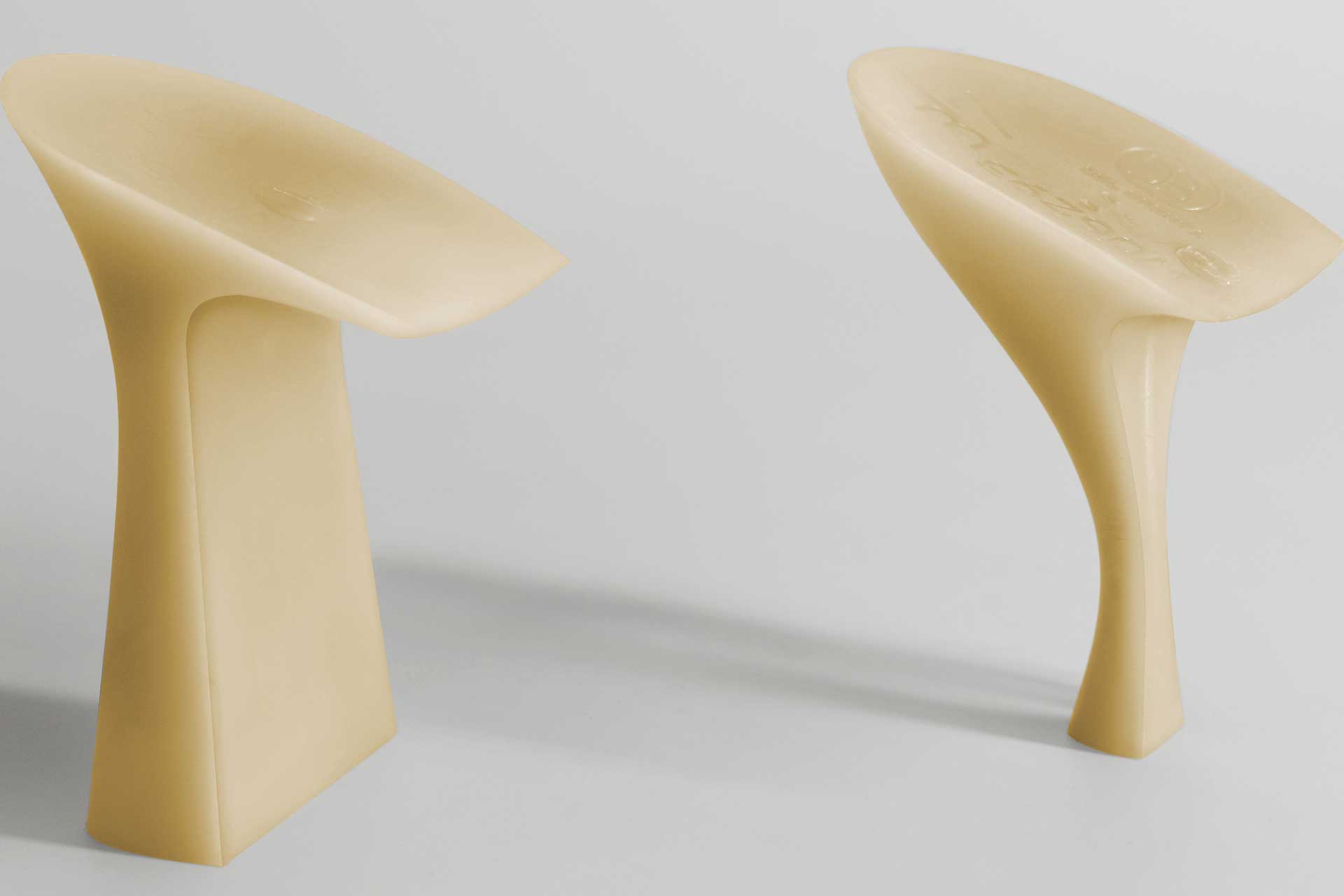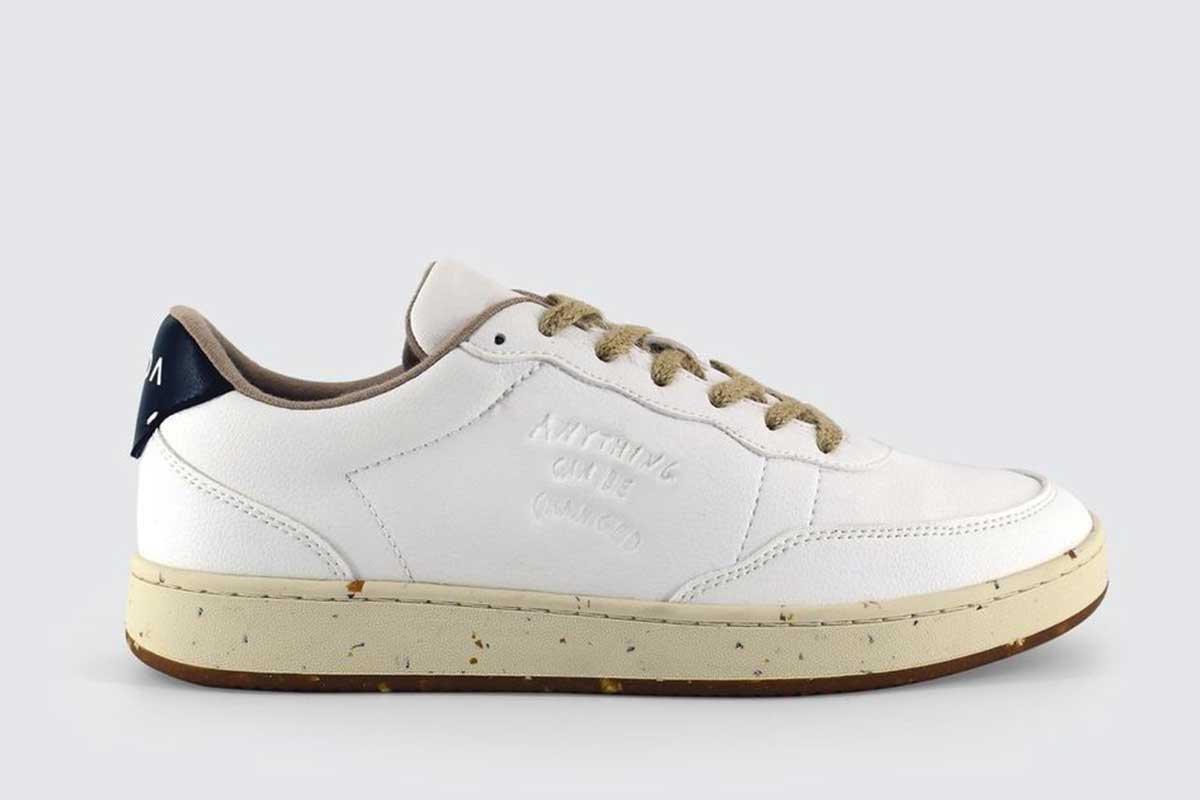Gio Giacobbe and Edoardo Iannuzzi: the Italian footwear startup expands the fashion industry’s focused sustainability efforts to a holistic circular model through collaborations
ACBC, born from modular sustainable innovation
A now-patented modular system for shoes, two entrepreneurs then living on different sides of the globe, and a viral video helping to raise seven hundred thousand pre-orders with their first Kickstarter led to the start-up that Gio Giacobbe and Edoardo Iannuzzi describe as a sustainability leader and has been nominated as the best start-up on Italy.
In 2017, Iannuzzi, now the Chief Sustainability Officer at ACBC, approached Giacobbe, the current CEO, with the idea of a sneaker conceived in a modular way, fully embracing eco-design principles such as design for disassembly, recycling, and maintenance. Separating the upper and lower parts, the ‘Zipshoe’ allowed one sole to create multiple shoes. This became the starting point from where they expanded their research and development to sustainable materials, which are done only from circular ones, so ones that are recyclable synthetic, organic, or biobased. There are four types of bio-based materials: bio-synthetic – they are chemically made from plants; plant-based – they are based on plants in formulations; bio-fabricated – made by living organisms such as bacteria; and bio-manipulated – i.e. materials derived from living organisms. These last ones are further manipulated by humans to reach higher performance and aesthetic look and feel.
Choosing materials for biodegradability and animal welfare
The company’s mindset is rooted in the belief that respecting the environment means respecting every living being. However, embracing animal welfare did not seem enough for the start-up, Iannuzzi explains, saying it is «too wide, there are so many grey areas that it is not a clear standard.» This realization hit following a collaboration in which they used merino wool, having accepted to use this material to give both brands the chance to let their brand DNA shine through. Realizing that even when there is an animal welfare certification in place when materials are extracted from animals, it is quite rare and difficult to find that the certification and animal welfare are fully respected, so the start-up decided to shift its focus directly into animal-free to avoid any problems. Not using animal products does not automatically deem a development more sustainable, as evidenced by the fact that ACBC’s products are not fully biodegradable, but this is mainly due to issues of ensuring durability.
The brand is committed to offsetting this by more research and development regarding biodegradable materials and recovering the value at the end of the product life cycle. As one of the steps towards this circularity vision, the start-up recycles shoes that consumers bring – from any brand – into playground mats. This is considered down-cycling, as the product goes on to a lower quality of value, with the ultimate goal being to keep the shoe at the same level of value, such as recycling the sole to make a new sole. Iannuzzi explains, «we are applying the same eco-design principles that were applied to create the Zip Shoe, but in a way, that recycling will be much more efficient.»
Changing the business model for a collaborative focus
Anything can be changed, as the very name of the start-up suggests, including the business model. With the rise of the pandemic, Giacobbe came up with the fateful idea of steering the brand into a collaborative model, mainly focused on sharing their know-how with others to co-create products. «Bringing and enacting change is our main mission to lead fashion towards its sustainable goals,» explains Iannuzzi. Having signed over twenty-seven collaborations, the brand is set to continue this model, which also helps the start-up by allowing them to leverage the marketing power of global brands to create a more significant impact. Giacobbe revealed upcoming collaborations with Philippe Model, EA7, and Diadora and a new edition of their previous work with Missoni.
This model also comes with its challenges, as introducing a new and sustainable way of thinking to a brand while also upholding both brand values is tough, «you need to change the mindset of the people first, change the process, and change the way people work,» Giacobbe explains. This is most apparent in collaboration with Piquadro. Being a brand that had never delved into footwear before, the start-up had the aim of translating the brand into the sustainable world and that of sneakers as a whole. This didn’t all happen overnight, as ACBC had to reach out to countless other brands through different channels, including LinkedIn, so the way that things have turned around to put ACBC on the center stage and for the brands to reach out instead acts as a great reward.
Made how, not made in
Iannuzzi compares the manufacturing process of sneakers to that of electro-domestic items rather than apparel due to its complex mix of materials like hard elastic polymers and its dependence on molds, adding up to a complex industrial process. «Once you apply sustainable thinking in terms of eco-design and materials to sneakers, I’m not saying you can do anything – but it’s close.»
The start-up deals with this complex process to be aligned with its broader views on sustainability through auditors and the request of certifications when analyzing factories to ensure social and environmental standards. Production is carried out worldwide, with the brand upholding the philosophy supporting the importance of ‘made how’ rather than ‘made in.’ This allows them to have footwear manufactured in locations where the highest expertise is, such as China and Indonesia for technical sneakers, and Italy and Portugal for more traditional designs.
A network of suppliers comes with great transparency and traceability responsibilities, which Iannuzzi sheds light on: «we never buy a product, we buy the materials and send them to a manufacturer to make the product,» giving them oversight on materials, suppliers, and how everything is made, ACBC also strives to optimize the production steps by limiting them to the minimum, as exampled by ‘The Fly’ shoe within the Missoni collaboration. The upper fiber part of the shoe was constructed by one single tube of knitting and directly glued onto the sole, eliminating extra materials like the Strobel Sheet or the Lasting Board, which are traditionally placed as an insole, along with their respective production stages.
Handling finances as a start-up during the pandemic
The start-up’s first investor was a business angel in Milan, which encouraged the founders to leave their previous jobs in London and China to move to Milan and found the company. Giacobbe stresses the importance of this initial investment and the feeling of gratitude, saying, «believing in something that doesn’t exist means believing in the people,» given the great uncertainty. This entails a sense of obligation and a striving to ensure a positive outcome for the investor. Following the first Kickstarter approach, the start-up was more confident and raised seven thousand euros in the second round when the company was one year old. The next came with the rise of the pandemic, with heightened risk averseness due to uncertainty about the future, but by the end of 2020, the start-up had raised 3.4 million euros. This placed ACBC in third place in Italy for the most money raised as a start-up, which seemed less impressive than the rest of the world, where the same amount of money wouldn’t have even placed the company in the top ten.
Nevertheless, the capital raised allowed the company to grow, albeit small. As a growing and changing start-up, the financial strategy changes too. Giacobbe underlines how fitting the company’s name is also in this sense, as the start-up evolves to ensure the right level of flexibility and adaptability.
Balancing sustainability, design, and price
‘Evergreen,’ the company’s best selling shoe, features a recycled rubber sole with visible flakes, a nude lace, and natural fiber with no dyes or bleach. This points to how consumers close the circle when they see that the product meets what they expect from the brand and how the aesthetic that generally suits the brand is one where the sustainability element is visible. Such an aesthetic is not for everyone, and every brand has its way of translating its DNA into the sustainable world, and if sustainable elements aren’t visible, that doesn’t mean they’re not there. The collaborative business model helps with this translation from many different points of view and brings in experience about various design possibilities.
The Missoni collaboration is once again a great example, and the ‘Basket’ sneaker, being one of the sneakers with the highest circular mass within, does not show it in its design. Instead, ACBC brought in elements from Ottavio Missoni’s designs for ‘Italia 90’ that were found while digging through the brand’s archives. When it comes to the pricing of the collections, the start-up stands by a strategy that ensures comparable prices with other brands that may not have engineering for impact to avoid higher prices deterring potential customers from a sustainable choice.
Circularity as the ultimate goal
«We should expect more accountability from brands rather than knowledge from the consumers» stresses Iannuzzi and emphasizes companies’ role in making a change towards a greener future. The relativity aspect when assessing sustainability allows for a more meaningful judgment, as the start-up holds that there is no such thing as a truly sustainable product, so the goal should instead be that of continuously reducing the impact and increasing the circularity of newer product lines. To this end, the ‘Evergreen’ shoe’s carbon footprint has been brought down to 7.38 kilograms of carbon dioxide, which is currently one of the lowest on the market.
Through its initiatives, the start-up aims to bring a more considerable change of mindset to the fashion industry and set an example for other brands to enlarge their focus from just circular materials to the entire lifecycle of products. This entails a change in the product structure and product design. ACBC aims to set the standard to show how sneakers can be made with much fewer components and materials and in a way that is much more easily recyclable and disassemble-able. «We need to put ourselves in a mindset where we are not extracting new materials and managing circularity as much as we can to extend product life cycle», says Iannuzzi, and points towards a sustainable economy that highlights buying less, buying better, using products for longer, and in the end making it all circular.
ACBC
It is a start-up founded in 2017 by Gio Giacobbe and Edoardo Iannuzzi, bringing innovation to the world of footwear through sharing know-how on sustainable materials and technologies through various collaborations. Currently having twenty-five mono-brand stores in nine countries, the brand focuses on reducing the environmental impact of shoe production.




















